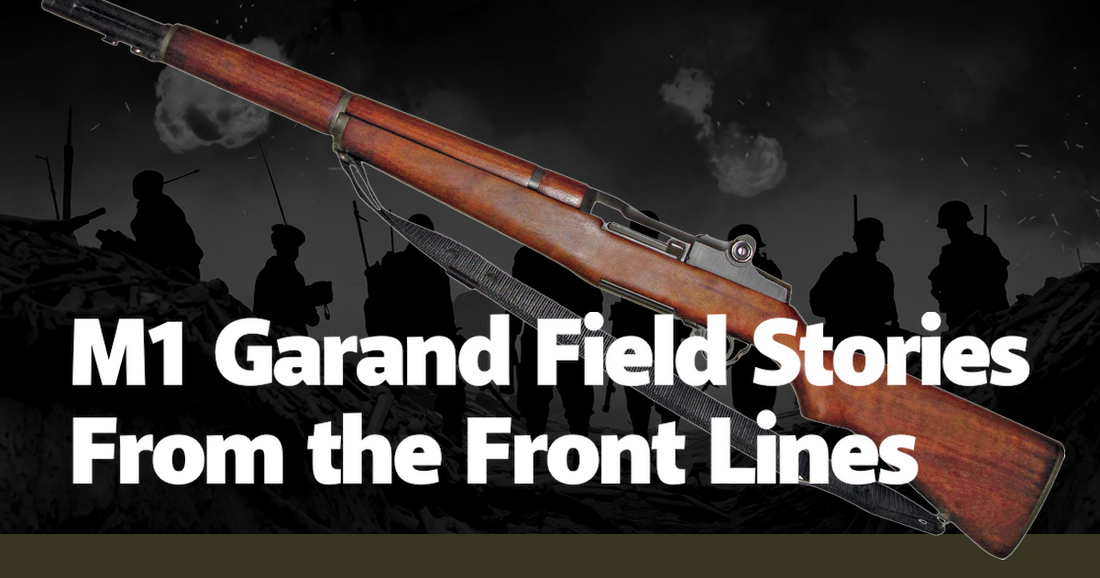The M1 Garand, often hailed as the rifle that won World War II, holds a revered place in military history, not just for its mechanical prowess but for the stories it carries from the front lines. This semi-automatic rifle, designed by John Garand, was the standard issue for U.S. forces during the war. Its reliability and firepower gave American soldiers a significant edge in various theaters of combat. But beyond its technical specifications, the M1 Garand became a silent witness to countless acts of bravery, desperation, and sacrifice. One such tale is that of Private First Class Robert Leckie, a Marine who fought in the Pacific. Leckie often spoke of how the Garand's rapid-fire capability saved his life during the brutal battles of Guadalcanal, where every second counted, and a jammed rifle could mean the difference between life and death.
In the dense, sweltering jungles of the Pacific, soldiers faced not only the enemy but also the unforgiving environment. The M1 Garand's robust design proved invaluable in these conditions. Marines like Leckie found themselves in close-quarter combat, where the rifle's eight-round clip provided a crucial advantage. In one harrowing encounter, Leckie and his squad were ambushed by Japanese forces. As chaos erupted, the Garand's distinctive ping, signaling an empty clip, echoed through the jungle. Leckie quickly reloaded, the smooth action of the Garand allowing him to maintain his composure and return fire effectively. Such moments underscored the rifle's role not just as a weapon, but as a lifeline in the heat of battle.
The European Theater presented its own set of challenges and stories. In the frigid winter of 1944, during the Battle of the Bulge, soldiers of the 101st Airborne Division found themselves surrounded by German forces in Bastogne. The bitter cold was relentless, and equipment failure was a constant threat. Yet, the M1 Garand remained steadfast. Corporal Donald Burgett, a paratrooper, recounted how the rifle's semi-automatic action allowed him to fend off waves of German infantry. Despite numb fingers and frostbite, the Garand's reliability never wavered. Burgett's ability to fire multiple rounds without manually cycling the action provided a crucial edge, allowing him and his comrades to hold their ground until reinforcements arrived.
Stories from the front lines also highlight the emotional bond soldiers formed with their Garands. For many, the rifle was more than a tool; it was a trusted companion. Sergeant John Basilone, a Medal of Honor recipient, spoke of his Garand with a reverence usually reserved for fellow soldiers. During the Battle of Henderson Field on Guadalcanal, Basilone's Garand became an extension of himself. As he held off an entire Japanese regiment, the rifle's precision and reliability were instrumental in his heroic defense. Basilone's story is a testament to the trust soldiers placed in their Garands, knowing that the rifle would perform under the most extreme conditions.
The M1 Garand also played a pivotal role in the liberation of Europe. During the D-Day landings, soldiers stormed the beaches of Normandy armed with Garands, facing a hail of enemy fire. Lieutenant Dick Winters of the 506th Parachute Infantry Regiment later described how the rifle's accuracy and firepower were crucial in overcoming the entrenched German defenses. As they advanced through the hedgerows of France, the Garand's ability to deliver sustained fire gave the American forces a significant advantage. Winters' leadership and the Garand's performance were instrumental in the success of their mission, highlighting the rifle's impact on the broader campaign to liberate Europe.
In the closing days of the war, the M1 Garand continued to prove its worth. During the assault on the German town of Aachen, Sergeant Joe Toye and his squad faced fierce resistance. The urban environment demanded quick reflexes and reliable weaponry. Toye's Garand, with its semi-automatic capability, allowed him to engage multiple targets rapidly, providing crucial support to his squad. The rifle's durability also meant it could withstand the rigors of urban combat, from dust and debris to close-quarter skirmishes. Toye's experience in Aachen is just one of many that illustrate the Garand's versatility and resilience in diverse combat scenarios.
The legacy of the M1 Garand extends beyond World War II. During the Korean War, the rifle once again saw action, proving its effectiveness in the harsh conditions of the Korean Peninsula. Veterans like Sergeant First Class Hiroshi Miyamura, a Medal of Honor recipient, relied on their Garands during intense battles such as the defense of the Pusan Perimeter. Miyamura's ability to deliver accurate, sustained fire was crucial in holding off enemy advances, demonstrating the Garand's continued relevance in post-World War II conflicts. The rifle's performance in Korea further cemented its reputation as one of the most reliable and effective infantry weapons of its time.
Today, the M1 Garand is celebrated not just as a piece of military hardware, but as a symbol of the courage and resilience of the soldiers who carried it. Museums and collectors preserve these rifles, ensuring that the stories of those who wielded them are not forgotten. The Garand's place in history is a testament to its design and the indomitable spirit of the men who fought with it. As we reflect on the field stories from the front lines, the M1 Garand stands as a powerful reminder of the sacrifices made and the battles won, a legacy etched in the annals of military history.

